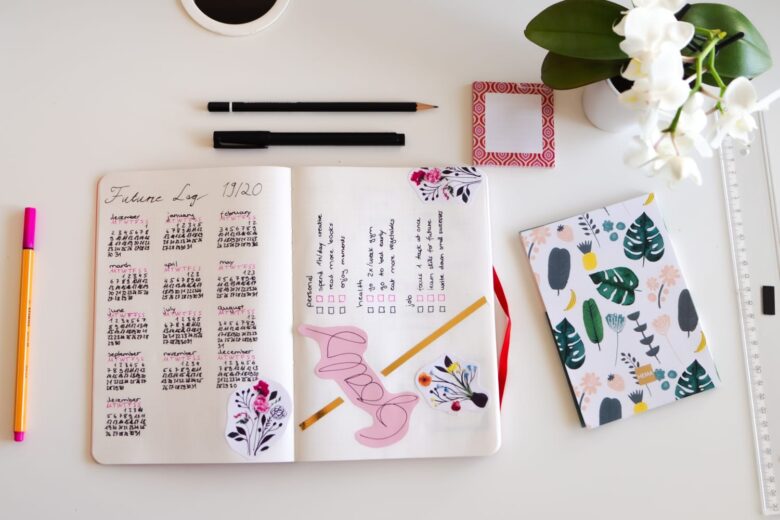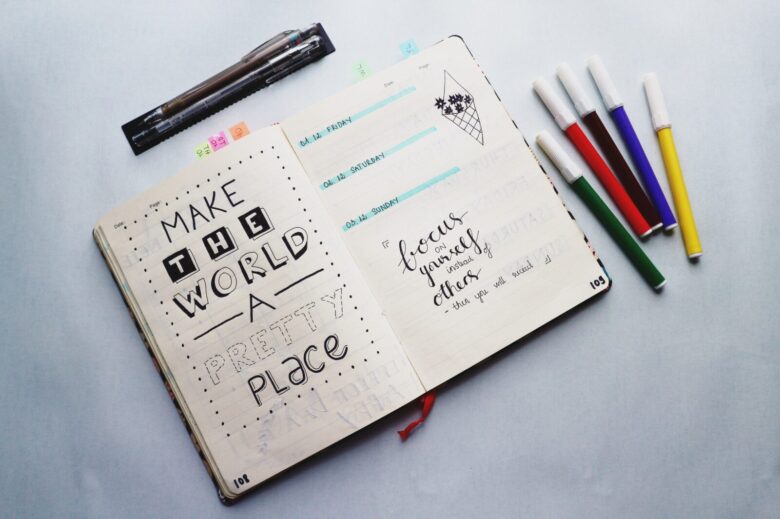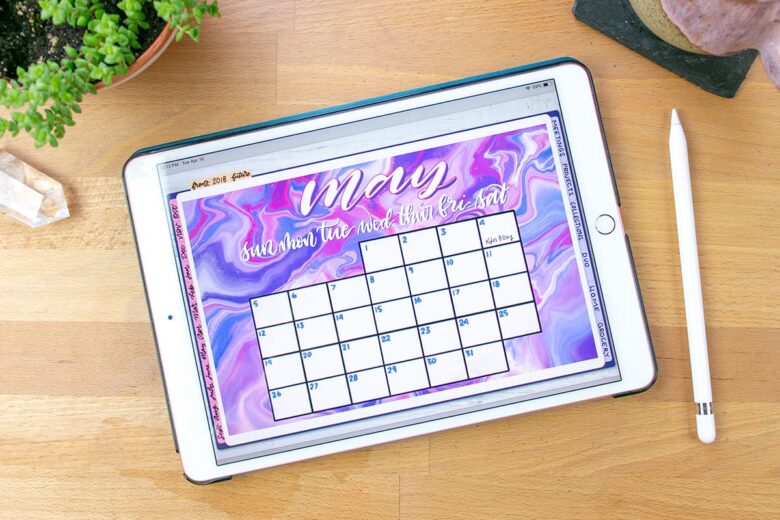In the whirlwind of the digital age, where apps and electronic reminders dominate our daily routines, the bullet journal emerges as a refreshingly simple yet profoundly effective organizational tool.
At its core, a bullet journal is a customizable and forgiving organization system. It serves as a planner, diary, to-do list, sketchbook, and more, all rolled into one. Its flexibility and simplicity have garnered a dedicated following of individuals seeking a more mindful and personalized approach to organization and life management.
The Genesis of the Bullet Journal

Source: gathered.how
The bullet journal, often abbreviated as ‘BuJo,’ was created by Ryder Carroll, a digital product designer from New York.
Carroll, who struggled with focusing and organizing due to learning disabilities, devised the bullet journal as a method to make sense of his chaotic and unstructured life. It’s a testament to the power of Carroll’s method that it has not only transformed his life but has also resonated with millions worldwide, becoming a cultural phenomenon. Learn more about bullet journaling here.
Understanding the Basic Structure
A bullet journal typically starts with an index or table of contents that you update as you go. This is followed by a future log, where you jot down events and tasks for the upcoming months. Then comes the monthly log, a bird’s-eye view of a single month, followed by the daily log, which captures day-to-day tasks, events, and notes. The beauty of a bullet journal is its lack of strict rules: you can adapt its basic structure to fit your personal needs.
Customization: The Heart of Bullet Journaling

Source: apartmenttherapy.com
What sets a bullet journal apart from traditional planners is its customization. You start with a blank notebook, and how you set it up is entirely up to you. You can create spreads for your specific needs, such as habit trackers, reading lists, mood boards, or meal planners. This flexibility makes it an ideal tool for individuals from various walks of life, from students and professionals to artists and homemakers.
The Art of Migration: Keeping Your Journal Clutter-Free
One of the unique aspects of a bullet journal is the concept of ‘migration.’ At the end of each month, you review unfinished tasks. If a task is still relevant, you ‘migrate’ it to the next month’s log. This practice encourages you to continuously re-evaluate and prioritize your tasks, ensuring that your journal and your mind remain clutter-free.
Incorporating Mindfulness and Reflection
A bullet journal is not just about organization; it’s also a tool for mindfulness and reflection. The act of physically writing down tasks, events, and notes forces you to slow down and process your thoughts. Many users find this aspect therapeutic, as it allows them to disconnect from the digital world and reflect on their goals, achievements, and personal growth.
Tips for Optimizing Your Bullet Journal

Source: moonsterleather.com
To make the most of your bullet journal, consider the following tips:
Start Simple: Don’t get overwhelmed by elaborate designs you see online. Start with the basic structure and gradually add elements as you become more comfortable.
Experiment with Layouts: Feel free to try out different weekly or monthly layouts until you find what works best for you. Remember, what works for someone else may not work for you.
Use Color Coding: Color coding can be an effective way to organize your entries. Assign colors to different categories like work, personal, health, etc., for easy identification.
Incorporate Habit Trackers: Habit trackers are a great way to monitor and build new habits. Whether it’s exercising, reading, or drinking water, tracking can boost your motivation and accountability.
Make Time for Reflection: Set aside time each week or month to review your journal. Reflect on what you’ve accomplished and what needs to be adjusted.
Keep it Portable: Choose a notebook size that is easy to carry around. Your bullet journal won’t be helpful if it’s not accessible when you need it.
Embrace Imperfection: Don’t worry about making mistakes. Bullet journals are meant to be functional, not perfect. Imperfections add character and make your journal uniquely yours.
Integrate Mindfulness Practices: Consider adding sections for gratitude logging or mindfulness exercises to enhance the introspective aspect of your journaling.
Stay Consistent: The real power of a bullet journal lies in regular use. Make it a part of your daily routine for maximum effectiveness.
Bullet Journaling in the Digital Era

Source: littlecoffeefox.com
In an era where digital tools are at the forefront, the bullet journal stands out as a testament to the enduring power of pen and paper. However, it’s not about shunning digital tools but about finding the right balance. Many bullet journal enthusiasts use their journals in tandem with digital tools to optimize their organization and productivity.
The Bullet Journal Community
The bullet journal community, sprawling across various social media platforms, is a vibrant and supportive space. Here, enthusiasts share layouts, ideas, and inspirations. Engaging with this community can be incredibly motivating, especially for beginners seeking guidance or inspiration.
Blending Creativity with Organization in Bullet Journaling

Source: nikkissupplystore.com
Bullet journaling transcends mere organization; it offers a platform for creativity and personal expression. This aspect transforms the journal into both an organizational tool and a creative outlet. Users often decorate their pages with sketches, themes, and various stationeries like washi tapes and colorful pens, turning routine planning into an enjoyable artistic activity.
This creative dimension is not just about aesthetics; it enhances engagement and motivation. Designing a bullet journal in a way that reflects personal style or mood makes the process more engaging and enjoyable. Whether one prefers intricate designs or a minimalist approach, the key lies in creating a journal that resonates personally and enhances the journaling experience.
Conclusion: More Than Just an Organizational Tool
The bullet journal is more than just an organizational tool; it’s a customizable system that adapts to your life. Its simplicity, combined with its profound ability to aid in mindfulness and reflection, makes it a uniquely powerful tool in our fast-paced, digital world. Whether you’re a seasoned bullet journaler or a curious newcomer, the journey of bullet journaling is one of continuous discovery, personalization, and growth.
